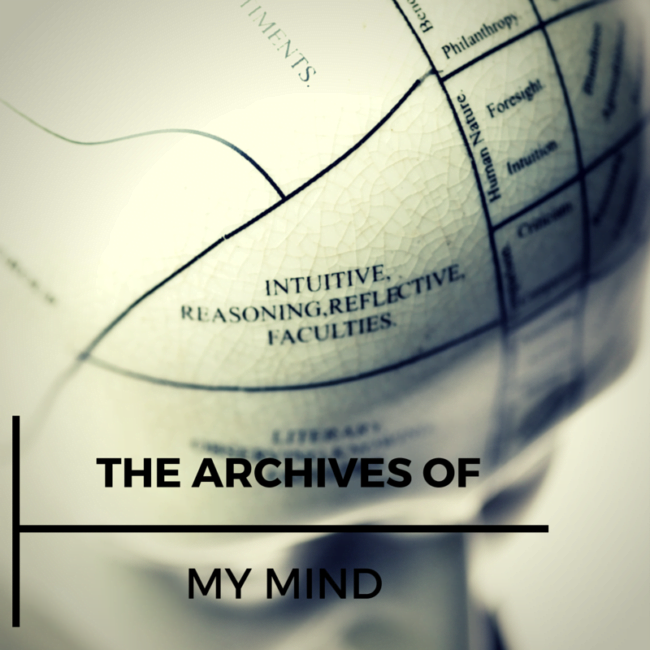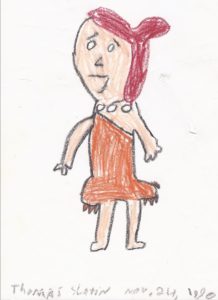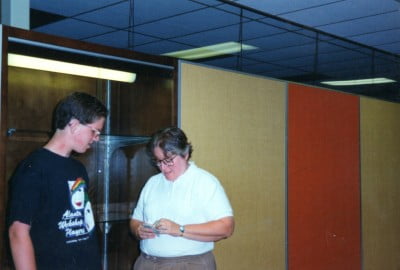I wish there was a means by which I could document the archives of my mind. I am always pondering the bits and pieces, snapshots, and fragments of memories that fill my brain, that shaped my past and were responsible, in part, for the person that I am today.
There are times in my life, specific moments that although many years have gone by, I still remember them as if they happened yesterday. My parents kept artifacts from my childhood that they found to be most important. Recently I was given the opportunity to go through some of the things that they had collected, of which I found to be nostalgic, at best.
Crayon Drawings – November 24, 1990
I wish that my parents had kept notes and records about my childhood instead of these crayon drawings and other childhood works of art. Ideally, I would have liked to have had more audio recordings of my childhood, more photographs, and perhaps even a few home movies. The majority of my past has been lost to the ravages of time; the details of my childhood are perhaps forever shrouded in uncertainty. Moreover, it has been my experience that those who knew me or were my friends since childhood are unable to recall events from so long ago, and even if they were able to, they find little interest in doing so.
Many of the memories seem to gravitate towards school. School is a major underlying theme in my childhood memories. I’ll start with fourth grade, because up until that point, nothing worth documenting happened.
Fourth Grade
In fourth grade, I remember sitting in class watching an exceedingly boring demonstration of how electricity works. The teacher had a panel of wood, to which were fixed a handful of light bulbs from a flashlight. The teacher proceeded to connect the bulbs in series, so that the electricity was made to flow through each bulb consecutively, and of course they were lit dimly. Then the teacher changed the wiring to show how the bulbs could be supplied electricity in parallel, much the way standard wiring is done in modern construction. It was the typical series/parallel electrical demonstration.
After the demonstration, which utterly fascinated several of my classmates, the teacher asked how the brightness of the bulbs could be improved. After the usual answers about wiring them in parallel and replacing the bulbs with brighter ones with a higher wattage, I made several suggestions.
First, shorten the wires, to decrease the amount of resistance from the copper wiring. Second, increase the diameter of the wiring to allow more current to flow through them. Third, refrigerate and/or cool the wires as much as possible to decrease electrical resistance. Fourth, instead of using a 6 volt battery, replace the supply with a 12 volt battery and double the voltage. And finally, replace the copper wire with gold wire, which is a much better conductor. I was sent to the principals office for these suggestions.
Fifth Grade
My father gave me my first camera when I was in fifth grade, a Canon SLR with a 50mm lens, and as much film as I could use. It was one of my most prized possessions, then my father gave me my first soldering iron and a solderless breadboard. We would take weekend trips to RadioShack and I would buy various electronic components and build all sorts of interesting things. I was also given my very own computer, which I later upgraded to a 486 by disassembling the components which made up the CPU and soldering together my own upgrade.
Sixth Grade
I have documented my experiences in Sixth Grade already.
Seventh Grade
In seventh grade I took a technology class in school. We were assigned projects to complete which focused primarily on practical engineering. There was one project which required us to build a bridge to span a 2-foot gap between two tables. We were then graded according to how much weight the bridge could support. The project had to be built using 12-inch match sticks and wood glue. While I don’t recall how well I did in this project, the tower building project is one that I will never forget.
In tower building, we were told to build a tower as tall as possible, not to exceed 14 feet, which was the ceiling height of the work area. We were provided with plastic drinking straws and safety pins. No other materials could be used. While the entire class sat around trying to figure out how to get their projects completed, I set to work on the floor of the shop building a foundation out of straws. I was on my very own during this process, as nobody wanted to work with me as part of a group.
At the end of the two-week time period for the project, my tower had reached just inches short of the ceiling because I had built my tower using cubes filled with triangles inside them for support. In other words, perfect cubes reinforced with cross-supports in all directions internally. Not only was it the tallest tower in the class, but because it was so well constructed, it was also the most difficult to dispose of.
The final project of the class was to bring in something that was junk from home. My parents had a broken electric can opener, which they sent me to class with. I spent a few hours taking it apart, then the duration of the following class days figuring out what went wrong. The final few days I put the appliance back together. Much to the shock and surprise of the teacher, I had not only reassembled the electric can opener, but I had managed to repair it. I remember coming back home with the electric can opener and my mom keeping it because not only did I manage to repair it, but it now functioned better than it did when my parents purchased it.
Eighth Grade
In eighth grade I was forced to take my first middle school Science class. My teacher was just one year away from retirement and had no patience at all. In fact, it seemed to me that he was still operating at a teaching level reminiscent of the 1950’s.
By this point in my life, I had already been exposed to common laboratory procedures having spent time shadowing my father at his job at a real-life industrial laboratory. Many of the experiments and demonstrations were things that I had either already seen, or were experiments that I had performed at home, often accompanied by my scientist father.
My parents had to travel by car to take me to a different school district in 8th grade, so I would often be stuck waiting for my school day to begin by waiting in the school science lab. Unfortunately, my science teacher would get to the school early every morning as early as he was allowed to, setting up experiments and demonstrations for the day.
One particular experiment caught my eye in the pre-planning stage. That week we were studying the effects of displacement; specifically how material occupies more space when it turns into a liquid and even more so when it becomes a gas. On the front table sat a large glass vessel with a pressure gauge. At the bottom of the vessel was what appeared to resemble gravel, and next to the vessel sat a 1 liter beaker filled with distilled water. The volumes of the vessel, the “stones” at the bottom of the vessel, and the 1 liter of water were all listed on the blackboard. The plan was to measure how much gas was produced and compare that amount of gas to the volume of the combined parts.
I had performed this same experiment many times on my own at home using measured amounts of baking soda and vinegar, so I knew what to expect. But this time, something seemed odd to me. The gravel at the bottom of the vessel? It was chunks of CaC2, otherwise known as calcium carbide. The problem is that when calcium carbide mixes with water, it produces acetylene, a very highly flammable gas typically used in industrial and welding applications:
CaC2 + 2 H2O → C2H2 + Ca(OH)2
When I brought up my concerns later on in the day about the production of acetylene and its hazardous unstable and unpredictable nature during the discussion of the experiment about to be conducted, I was sent to sit in the hallway. Moments later, there came a large explosion from the middle school laboratory which shook the wall and floor, sending the remainder of the class running towards the emergency exit, and my science teacher to the door to the hallway. And as was regular fashion, I was forcibly taken by the arm and dragged to the principals office only to be blamed for the mishap in the lab.
All my life I have been fascinated with things being made better, more efficient, and/or improved. I grew up in an environment that fostered introversion, where I built my own toys, gadgets, and computer programs. I also sought out my own extracurricular interests at the local library.
Colophon
The header image was made using Canva; the font used is Montserrat.
Asides
Pieces | 6th Grade, And Other Mishaps | The Tapes | Growing Up Introvert |Â 11 Struggles Of Being An Ambitious Introvert





Great post! I very much enjoy your writing! Thank you for the link to “Pieces.”
Perhaps the student inspired the teacher this time?
All my best,
Amy
Perhaps, maybe. Hard to say with any certainty.
Loved this…how rude to be blamed for the teachers inadequacy! Very interesting post.
It’s the story of my life as far as my education is concerned, as evidenced by this and subsequent posts which document my experiences.
Also, thanks for your comment!